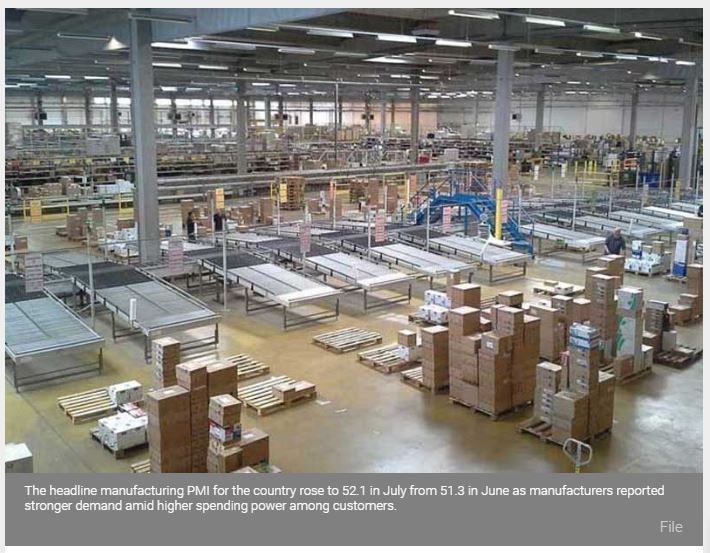Philippines manufacturing improves in July
MANILA, Philippines — Philippine manufacturing conditions improved at the strongest pace during the year in July, on the back of faster growth in new orders, sales and employment, according to the latest IHS Markit Philippines Manufacturing Purchasing Managers’ Index (PMI).
The headline manufacturing PMI for the country rose to 52.1 in July from 51.3 in June as manufacturers reported stronger demand amid higher spending power among customers.
Despite the improvement in business conditions in July, this was still weaker than the average reading recorded in survey history (since January 2016).
The increase in demand was largely domestic as new export orders extended its slowdown from June although at a slower pace.
To keep pace with the stronger demand, manufacturers ramped up production and in the process increased the purchase of inputs.
Delivery times for input suppliers remained challenging during the month, but firms experienced fewer delays in connection to congestion around the port of Manila.
More workers were also hired across the manufacturing sector during the period, the fastest growth since February.
Input cost inflation increased marginally from June, but proved to be manageable for most firms as few companies raised prices of their products during the month.
While some firms saw higher prices of raw materials, an improved exchange rate with the US dollar helped ease cost burdens.
With output and sales growth remaining strong, businesses remain optimistic about introducing new products in the future, said IHS Markit.
“New order growth was up notably in July, easing some worries in recent months that the manufacturing environment was facing a slowdown. Output, meanwhile, increased at a solid rate, albeit one that was weaker-than-average for the Filipino goods-producing sector,” said IHS Markit economist David Owen.
“Despite the sudden uplift in demand, price pressures appeared unaffected. Input prices rose at only a modest pace, with an improvement in the exchange rate with the US dollar helping to ease the impact of higher raw material prices. Overall, this should help to maintain strong sales growth if demand conditions remain elevated,” he added.
Domestic manufacturing conditions bucked the trend in the ASEAN factory sector which saw diminished output and employment.
The headline manufacturing PMI for the region fell to 49.5 in July from 49.7 in June, signalling a second successive monthly deterioration in operating conditions at ASEAN manufacturers. Furthermore, this marked the lowest reading in two years.
Despite the modest increase in demand, companies in several countries pared back input purchasing and production.
“The ASEAN manufacturing sector remained in decline in July, according to the latest PMI survey data. In fact, the rate of deterioration was the steepest in two years, driven by lower output and employment. Firms were led to reduce production levels on the back of only marginal increases in new orders in recent months,” Owen said.
“As such, manufacturers appear in a difficult position, and require stronger demand growth to lift them out of the current soft patch. Output prices also rose at a subdued pace, the joint-slowest since August 2016, suggesting that some firms are relying on discounts to attract customers. Thus, next month’s data will show whether the downturn in the ASEAN region is temporary or long-term,” he added.
Source: https://www.philstar.com/business/2019/08/02/1939795/philippines-manufacturing-improves-july#yDo3wGKTSgOEX6ZF.99


 Thailand
Thailand




